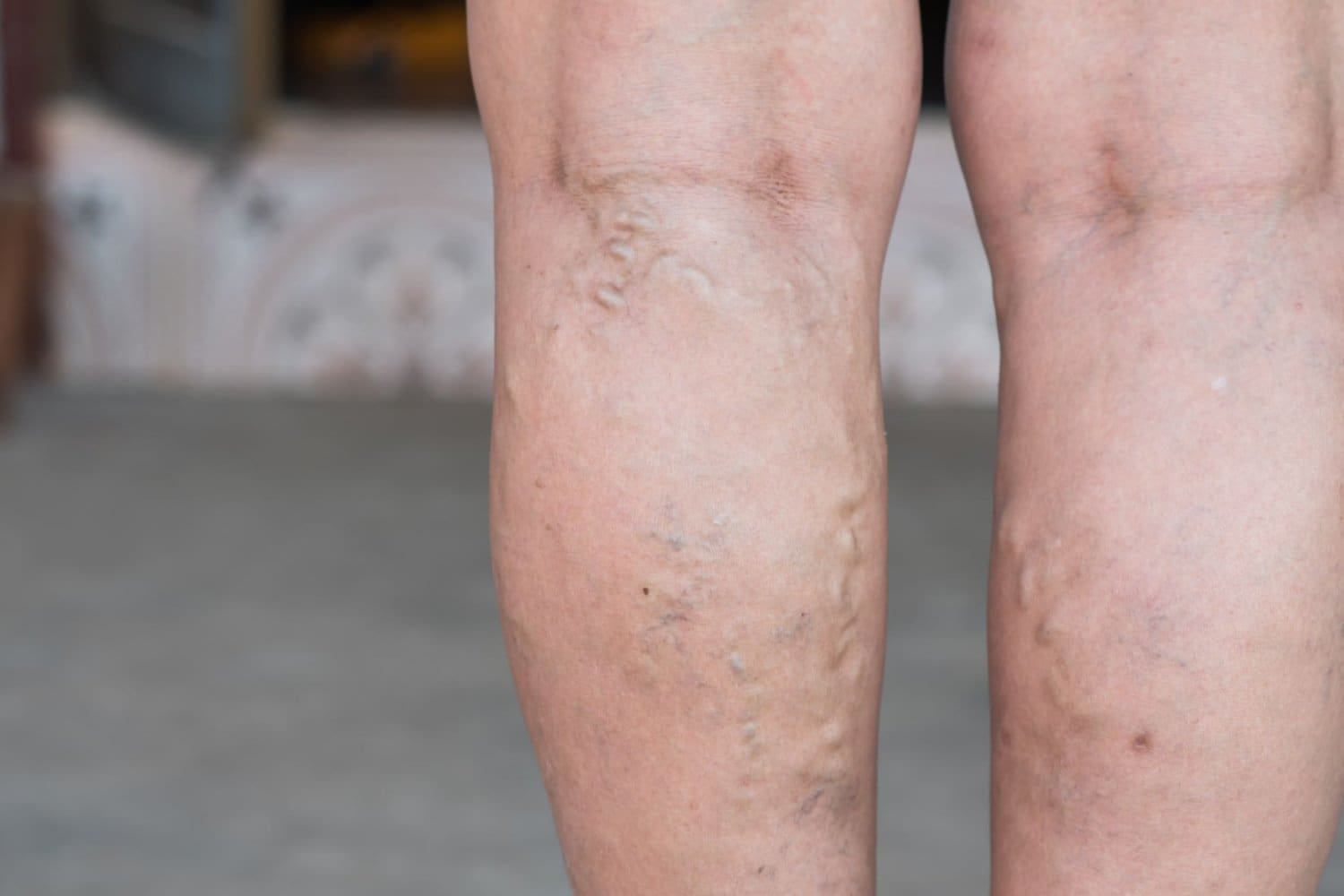Got tiny red threads on your calves? Worried the rope-like vein behind your knee is a problem? Spider veins and varicose veins get lumped together, but they behave and are treated very differently. Below, you’ll learn how to spot each one, why they form, and what modern medicine can do to get rid of them.
What are Spider Veins?
- What they look like – Thin red, blue, or purple lines that branch out like a web or a roadmap just under the skin’s surface. They don’t bulge or have a rope-like texture.
- Where they live – Outer thighs, calves, ankles, and sometimes the face.
- How they feel – Usually symptom-free, though some people notice mild itching or burning after a long day of standing.
- Why they show up – Genetics, pregnancy, obesity, sun exposure (for facial clusters), hormonal changes, long hours of sitting or standing, and smoking all put extra pressure on tiny surface vessels.
- Health risk – Almost always cosmetic; rarely related to deeper vein disease.
What are Varicose Veins?
- What they look like – Enlarged veins three millimeters or more across that bulge, twist, or look like cords of grapes under the skin.
- Where they live – Calves, back of the knee, and inner thigh.
- How they feel – Aching, heaviness, night cramps, throbbing, ankle swelling, or restless legs. In advanced cases, skin darkens or small ulcers appear near the ankle.
- Why they show up – Weak or damaged one-way valves let blood flow backward and stretch the vein wall. Age, pregnancy, family history, obesity, and job-related standing or sitting all increase the odds.
- Health risk – Can progress to chronic venous insufficiency, leg ulcers, and, rarely, blood clots if ignored.
Why Do Spider Veins vs Varicose Veins: Why do they Form?
Inside every leg vein are tiny valves that act like one-way doors, keeping blood moving uphill towards the heart. Over time, pressure from pregnancy, extra weight, hormonal changes, or hours on your feet can weaken those valves
- Varicose veins develop when larger superficial veins lose valve function, balloon out, and become tortuous.
- Spider veins form when pressure overload reaches minute surface vessels, and they dilate and become visible.
When to See a Vein Specialist
- Spider veins – Schedule a consultation if clusters spread fast, sting, or you just want them gone for cosmetic reasons.
- Varicose veins – See a professional if you have pain, swelling, skin discoloration, a hard lump, or a sudden increase in size. Early treatment prevents more serious complications.
Getting a Diagnosis
A painless duplex ultrasound maps blood flow, identifies faulty valves, and measures vein diameter – no radiation, no special prep. At the Vein Institute, every new patient visit includes this scan so treatment can be tailored to your exact vein map.
Vein Treatment Options
Clearing Spider Veins
- Sclerotherapy – A micro-needle delivers a prescription solution or foam that collapses unwanted veins; the body absorbs them over several weeks. Success rates often exceed 70% for small vessels.
- Infrared Coagulation – Best for fine facial or ankle clusters; no needles required.
Fixing Varicose Veins
- Endovenous Laser Ablation (EVLA) or Radiofrequency Ablation (RFA) – A thin fiber heats the vein shut from the inside. Closure rates are typically above 90% at one year with low recurrence.
- Venaseal– Seals the vein without heat or large volumes of numbing fluid; walking is encouraged immediately after.
- Ultrasound-guided Foam Sclerotherapy – Targets twisting branches or residual veins that remain after ablation.
- Phlebectomy – Tiny punctures remove bulging segments for the smoothest cosmetic finish.
Minimally invasive techniques have replaced traditional surgical stripping for most patients because they offer similar or better results with much less downtime.
Everyday Habits That Help Reduce Spider Veins and Varicose Veins
- Move every 30 minutes – Your calf muscles act like a second heart, pumping blood upward each time you walk or flex your ankles.
- Maintain a healthy weight – Less pressure on leg valves means less strain over time.
- Elevate your legs after work – Ten minutes with feet above heart level reduces swelling and discomfort.
- Wear compression socks if you sit or stand all day – They help circulation and slow new vein growth.
Compression won’t remove existing varicose veins, but it will help with symptoms until you decide to treat.
How Vein Institute Handles Spider Veins and Varicose Veins
Your visit begins with a consultation and on-site ultrasound. We then create a plan based on your vein map, lifestyle, and goals. Most treatments take less than an hour, require no anesthesia, and you can walk immediately. Our board-certified specialists perform thousands of procedures a year, so your legs are in good hands from start to finish.
Quick Facts
- Spider veins are small surface vessels that are mostly cosmetic.
- Varicose veins are larger bulging veins that can lead to serious problems if left untreated.
- Both have risk factors – genetics, hormones, and prolonged standing/sitting – but varicose veins have more complications.
- Minimally invasive treatments like EVLA, RFA, and sclerotherapy have replaced surgical stripping for most people.
- Lifestyle changes help manage symptoms, but definitive treatment fixes the root cause – faulty valves.
Book Your Spider Vein or Varicose Vein Assessment
Ready to feel lighter on your feet and more comfortable in shorts? Schedule a vein evaluation with Vein Institute and take the first step towards healthier, better looking legs.

